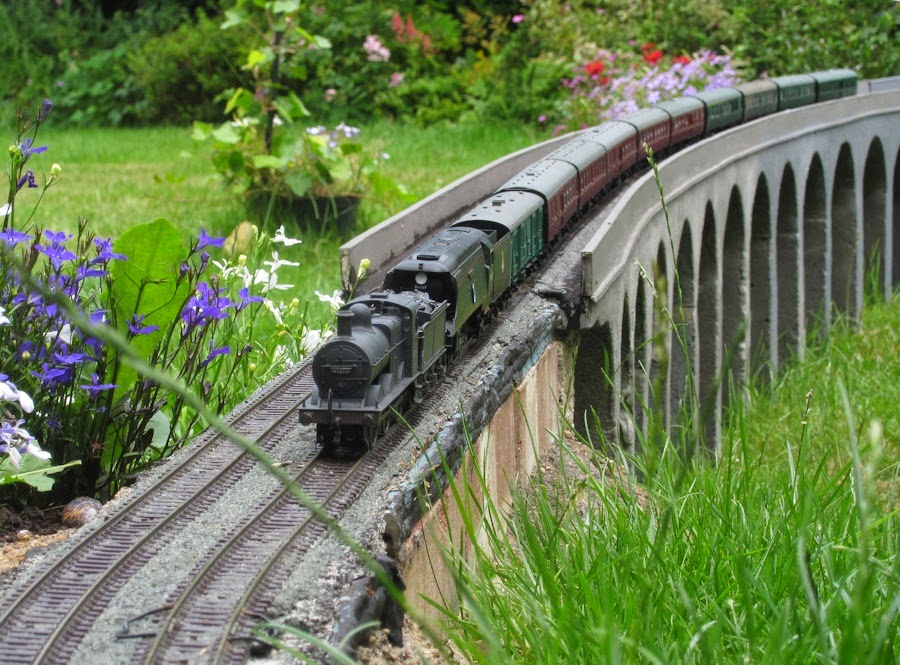All is not well at Quarry sidings. The junction is close to the Oak tree, and it was always recognised that the tree's roots might one day cause problems. Over the past two years, the ground has lifted slightly, and one of the rail joints opened up by about 2mm. However, the situation is now changing rapidly. In the past month, the rail gap has opened up to 8mm, and there is a pronounced "hump" in the track. I suppose it's the opposite of subsidence. Whatever it's called, some speedy action is required.
 |
| A gap of 8mm where two sections of rail join. |
 |
| There is a pronounced hump in the track. |
I now have a plan of action aimed at resolving the problem of track distortion due to tree root growth.
1. Move downhill end of rockery back by about 6" (further if practical).
2. Build a simple, "bridge" over the tree roots, along new route of main line (see below).
3. Re-arrange the three sets of points at Quarry junction, as shown in the first picture below.
4. Lay new main line to Gate viaduct.
5. Re-align track on quarry end of viaduct
6. Run test trains. If ok, open champagne. If not, go back to 1.
7. In 2019, run test trains again. If still ok, open another bottle. If not find another hobby.
The
first picture is a view looking down on the three sets of points at Quarry
junction. Overlaid are three similar sets of points arranged differently so that
they slew the main line onto a route further away from the tree. This scheme has
the attraction that it doesn't require the purchase of new points; it uses the
existing ones. The middle set is turned though 180 degrees, and the other two
are swapped over.
 |
| The Rockery re-aligned. |














